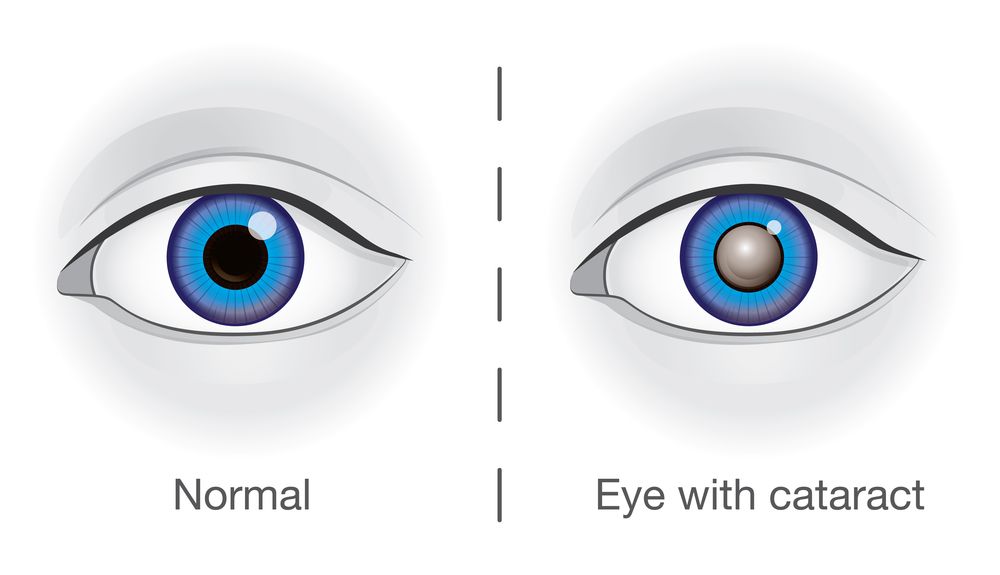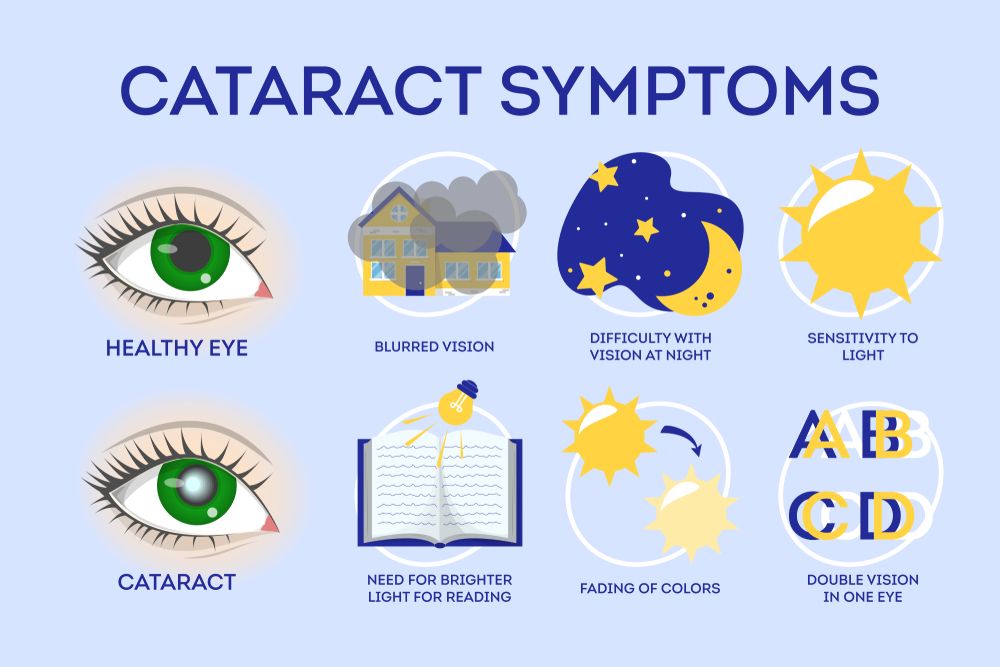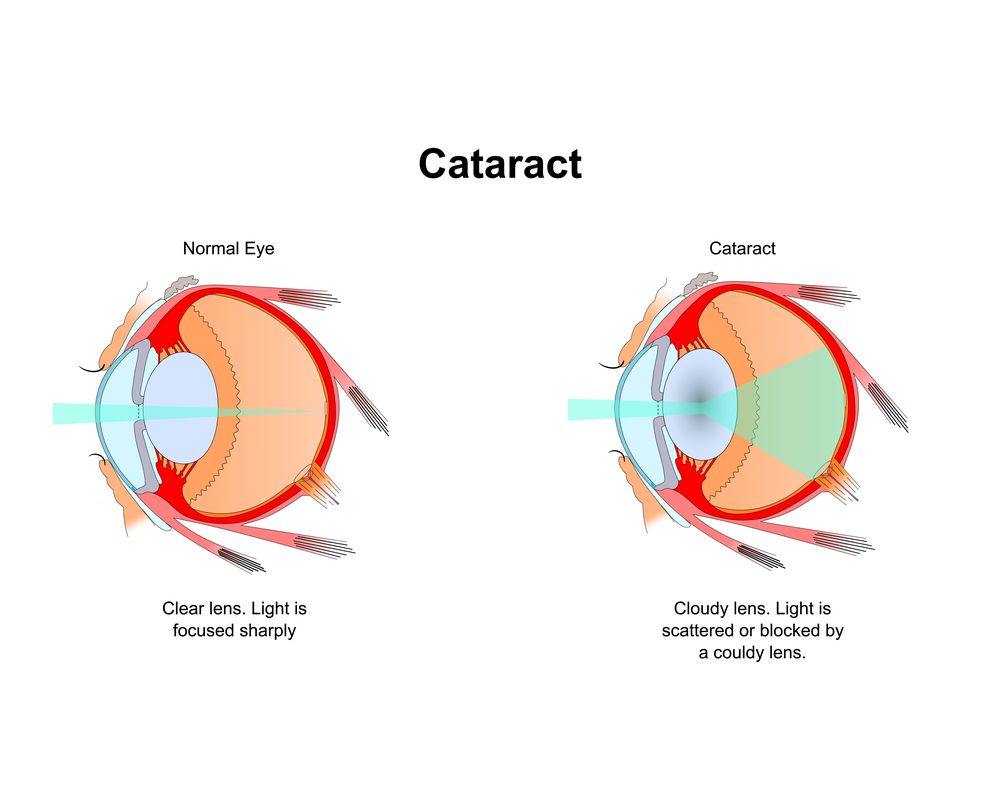Table of Contents
What is a Cataract?
A cataract is the dense clouding area form in the clear lens of the eye. It resultant in blurry vision or a bit like looking through a frosty or fogged-up window. A cataract begins when proteins in the eye form dense area that prevent the lens from sending clear images to the retina.
The retina works by converting the light into signals that come through the lens. The signals further send to the optic nerve, which carries them to the brain. Thus a cataract interferes with clear vision or creates blurry images to the retina.

A cataract develops slowly and doesn’t affect your vision in the early stage. But with time, cataracts will eventually interfere with your vision. Cataracts can affect both eyes, but they usually don’t form at the same time. The formation of cataracts is most common in older people.
Clouded or blurry vision caused by cataracts can make it more difficult to read, drive a car (especially at night) or see the expression on a friend’s face.
At the starting stage, bright lighting and eyeglasses can help you deal with cataracts. But at a later stage, when impaired vision interferes with your usual activities, your ophthalmologist may suggest cataract surgery.
Symptoms of Cataracts
A cataract causes the following symptoms or Sign:
- Blurry or clouded vision
- Increasing vision difficulty at night
- Increase sensitivity to brighter lights and glare
- Facing difficulty in reading and other activities
- seeing colors as faded
- Appearing halos around lights
- Double vision in a single eye
- Frequently changes in eyeglass number or lowering vision

At the Early Stage, the blurriness in your vision caused by a cataract may affect only a small area of the eye’s lens and you may be unaware of any vision loss. As the cataract grows older or large, it clouds more of your lens and distorts the light passing through the lens. It may be noticeable easily and take it as the primary symptoms of cataract.
What Causes Cataracts?
In most people, cataracts develop with growing age. Several times, an injury changes the tissue that makes up your eye’s lens and forms a cataract.
Some genetic disorders that are responsible for other health problems can increase your risk of cataracts. Past eye surgeries or medical conditions such as diabetes also enhance the risk of Cataracts. Taking steroid medications for a long time, too, can cause cataracts to develop.

Types of Cataracts:
There are different types of cataracts. A cataract is classified based on where and how they develop in your eye.
- Nuclear Cataracts: A nuclear cataract affect the center of the lens. It causes the center, to become yellow or brown.
- Cortical Cataracts: Cortical cataracts affect the edges of the lens. Cortical cataracts are wedge-shaped and form around the edges of the nucleus.
- Posterior Subcapsular Cataracts: Posterior capsular cataracts affect the back of the lens.
- Congenital Cataracts: Some people are born with cataracts that could be genetic, or associated with an intrauterine infection or trauma. These cataracts may develop during childhood as well.
Risk factors
Factors that increase your risk of cataracts include:
- Increasing age
- Diabetes
- High blood pressure
- Previous eye injury or inflammation
- Excessive exposure to sunlight
- Smoking
- Obesity
- Previous eye surgery
- Prolonged use of corticosteroid medications
- Drinking excessive amounts of alcohol
Prevention
There are no proven methods of how to prevent cataracts or slow the development of cataracts. But doctors think several strategies may be helpful, including:
- Have regular eye examinations: Regular Eye checks up can help detect cataracts and other eye problems at their earliest stages.
- Quit smoking: Stop smoking could prevent the development of cataracts. Ask your doctor if Medications, counseling and other strategies are available to help you to quit smoking.
- Choose a healthy diet with plenty of fruits and vegetables: Fruits and green vegetables are good sources of getting many vitamins and nutrients. Including them in your diet help you to maintain the health of your eyes.
- Take care of other health problems: If you have diabetes or other medical conditions that can increase your risk of cataracts you should seriously take care of it.
- Wear sunglasses: UV light from the sun is the main source of the development of cataracts. Wearing sunglasses may help you to block ultraviolet B (UVB) rays when you’re outdoors.
- Reduce alcohol use. Excessive alcohol consumption can also increase the risk of cataracts.
